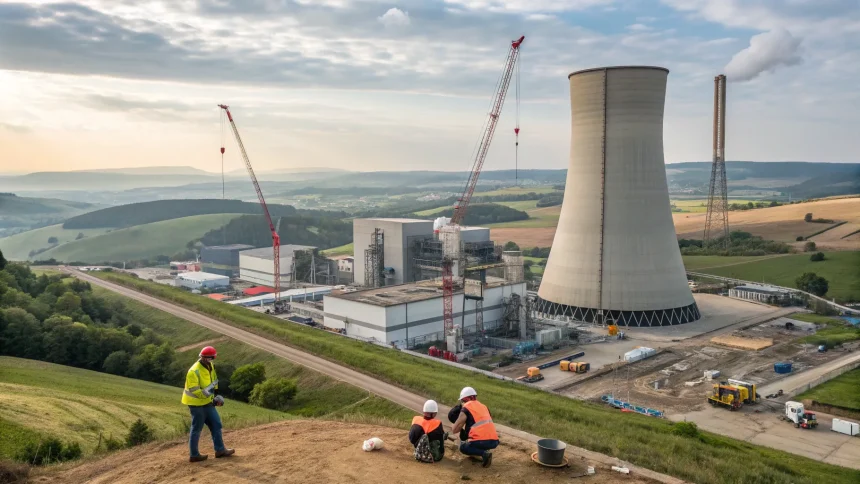Google and NextEra Energy are joining forces to revive a nuclear energy site in Iowa, aiming to supply fast-growing power needs tied to artificial intelligence. The move comes as data center demand strains grids nationwide and companies search for steady, low-carbon electricity to keep new computing clusters online.
Few details were released, but the partnership signals a push to pair AI expansion with firm, carbon-free power. The effort could reshape local energy planning and set a template for how tech firms secure power for high-density computing.
Why AI Is Driving a Power Hunt
AI training and inference require large data centers that run around the clock. Analysts say electricity demand from data centers could double by the middle of the decade. The International Energy Agency has warned that servers, networks, and AI chips are on track to consume far more power as adoption accelerates.
Utilities in regions with big data center hubs are revising demand forecasts. Grid operators have flagged constraints and longer interconnection queues. Companies with big AI roadmaps are now competing for long-term power contracts.
Iowa’s Nuclear Past and a Possible Return
Iowa no longer has an operating nuclear plant. The state’s lone facility, the Duane Arnold Energy Center near Palo, ceased operations in 2020 after storm damage hastened its retirement. NextEra Energy Resources owned and operated the plant and later advanced plans for solar and battery storage at the site.
Reviving a nuclear facility in Iowa would be a major shift. It could involve refurbishing existing infrastructure or pursuing advanced designs that meet current federal standards. Either path would require extensive regulatory review by the Nuclear Regulatory Commission and new investment in transmission, workforce, and fuel supply.
What the Companies Said
“Google and NextEra Energy are partnering to revive a major nuclear energy facility in Iowa as part of efforts to meet growing energy demands from AI.”
The statement suggests a direct link to power needs from AI workloads. It aligns with Google’s stated goal to match its electricity use with carbon-free energy every hour, everywhere it operates, by 2030. NextEra, the nation’s largest developer of wind and solar, has also sought long-duration, firm power sources to balance variable generation.
Potential Impact on the Grid and Industry
Nuclear power offers steady output, which can stabilize grids with rising shares of wind and solar. For data centers, it supports high uptime and predictable costs through long-term contracts. A successful restart or replacement in Iowa could help meet regional demand while cutting emissions.
It could also influence how other tech firms source power. Microsoft has explored nuclear options, and cloud providers are signing deals for geothermal and large batteries. A high-profile nuclear project linked to AI would widen the menu of firm, clean power choices.
- Firm power can reduce curtailment of wind and solar.
- Long-term contracts may hedge against price swings.
- Local tax and job benefits often follow large energy projects.
Hurdles Ahead
Cost and timing remain the biggest questions. U.S. nuclear projects have faced delays and overruns in recent years. Any refurbishment or new build in Iowa would require clear financing, supply chain capacity, and a qualified workforce.
Regulatory approvals can take years. Community engagement will be central, especially on safety, water use, waste handling, and emergency planning. Grid upgrades may also be needed to move power to data center clusters.
What To Watch Next
Key signals will include the site location, the project’s design, and a construction timeline. Power purchase agreements, if disclosed, will show how much load the plant is meant to cover. State policy support and transmission plans will also shape the outcome.
The partnership points to a new phase in the race to power AI growth without raising emissions. If the Iowa project advances on time and budget, it could become a model for pairing data centers with firm, carbon-free power.
This effort marks an important turn in how tech and energy companies plan for the next wave of computing. The stakes are high for reliability, climate goals, and regional economic development. The coming months should clarify the scope, schedule, and the scale of energy that AI will require in the Midwest.







